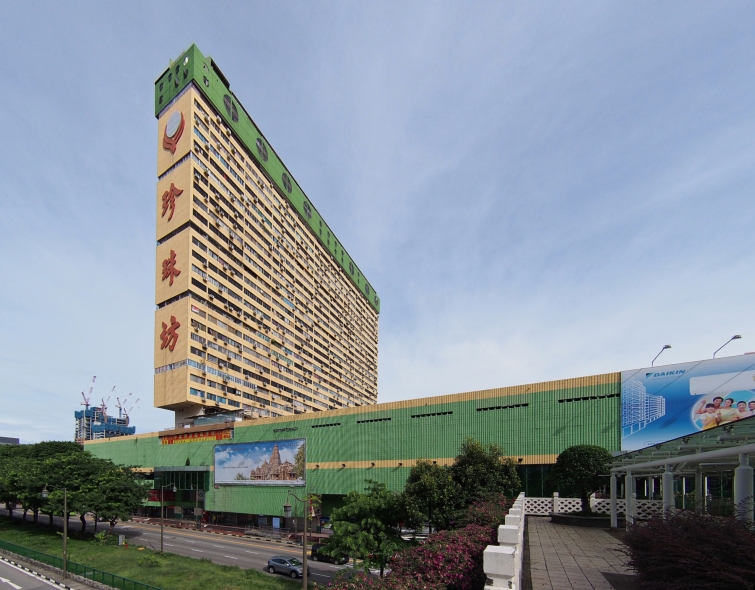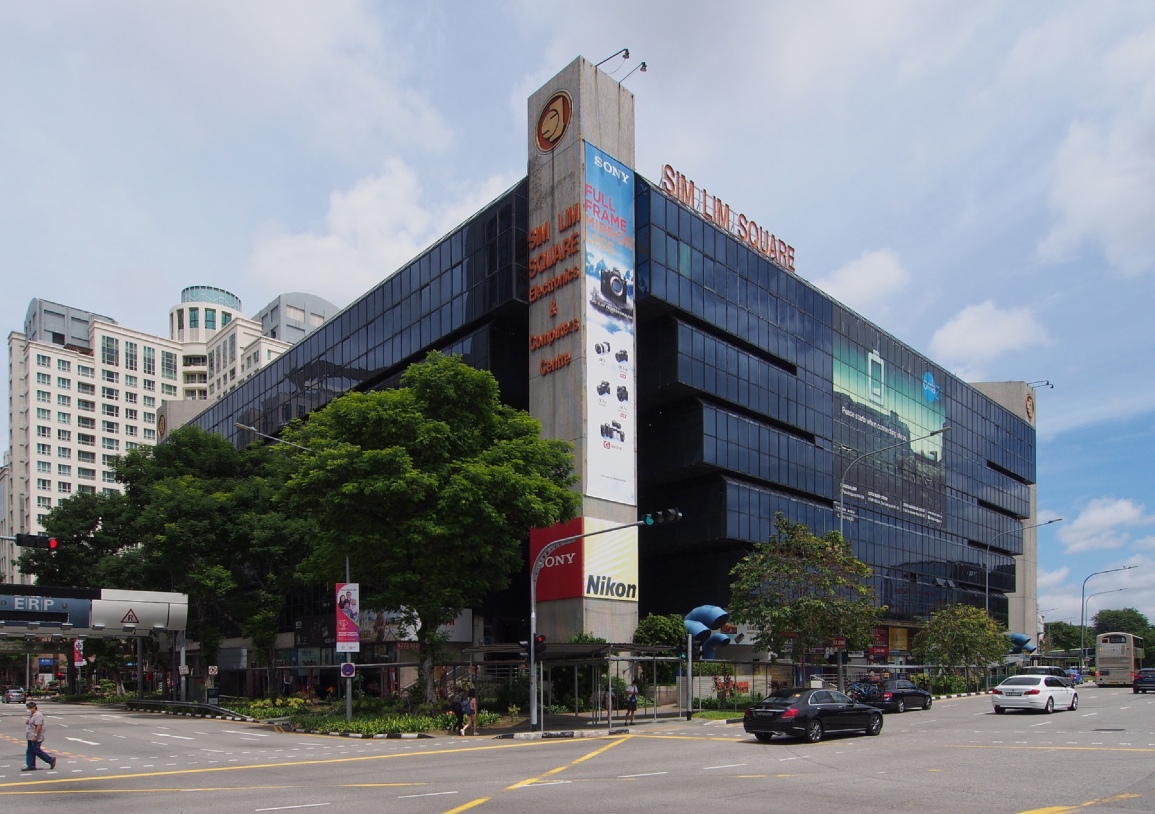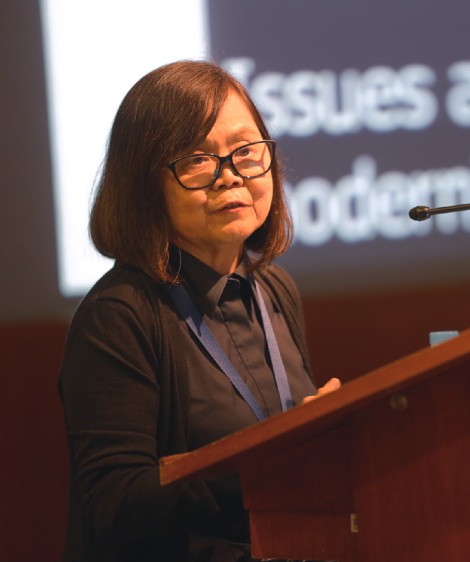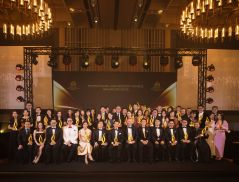
Introduction
Heritage conservation involves multiple stakeholders with a diverse range of value positions. Where these values collide, the process becomes protracted, and oftentimes result in untenable situations that not only threaten significant urban heritage, but also create tension and social friction within communities.
Yet, it is possible to bring forth positive conservation outcomes through the processes of social adjustment, design adaptation and institutional reforms, so long as there is collective recognition of the larger community good and reasonable accommodation of market or economic aspirations.
As noted by Hubert-Jan Henket, Founding Chair of Docomomo1, “The preservation of significant works of art, presents a demanding economic and physical problem. The continued life of both the icon and the ordinary as elements of an economically driven world depends first on a shared recognition of their cultural and social value and second upon their continuing economic viability. The reconciliation of these two key facts lies at the core of the international crusade.”
Conservation of the Recent Past
In Singapore, while urban conservation has been well established since the mid-1980s, the public discourse on modernist buildings i.e. buildings of more recent historical and architectural vintage, has come to the fore of public discourse only in the last few years.
The term “modernist” has been used extensively to refer to those buildings which are essentially designed and constructed as part of the Modern movement in architecture that emerged in western countries in the early 20th century, with its focus on “the rational use of new materials and technology, the principles of functionalist planning, and the rejection of historical precedent and ornamentation”.
In conservation literature, the descriptor “recent past” is used for these buildings, as opposed to “historical past”, which alludes to a period much further back in the city’s history, although the time reference line varies across countries and cities. In the UK, for example, these buildings are defined with reference to World War II, and conservation efforts for these buildings have already begun since the 1970s with the establishment of the C20 Society.
In Singapore, the present attention is on buildings constructed in the post-independence years as part of the city’s urban renewal program, an example of which is the Golden Mile Complex, located in the Beach Road area, the first precinct identified for urban renewal in the 1960s.
Other well-known examples are the Pearl Bank Apartments and the People’s Park Complex in the Chinatown precinct; all three have been regarded as outstanding examples of “modernist architectural icons”, recognised both for their design innovation as well as being representational built artefacts of Singapore’s post-independence nation building efforts.
Less well-known examples include buildings like the Chinatown Plaza, Peace Centre and Sim Lim Square, all of which have been considered as part of the distinctive architectural commons that marks the start of Singapore’s journey of transformation into the modern city that it is today.


Similar to the experience in many cities, the general public’s attitude toward these buildings of recent history is shaped by contemporary values, attitudes and priorities. For Singapore, a prevailing sentiment seems to be that land scarcity would demand a stringent approach to urban conservation, and continual urban renewal is necessary to ensure sustained provision of building stock to meet economic needs.
In a market economy, this would imply a predilection toward demolition, the pressure to redevelop heightened when a building is located in a commercially profitable location, aggravated no less by the worsening state of deterioration of many of them.
While heritage advocates have tried relentlessly to argue for conservation status for these buildings, pushing forth the argument that many of them are “architectural masterpieces” by local pioneer architects, there is as yet no consensus on their conservation worthiness. Their modernist designs are often not well appreciated, and indeed regarded by lay persons as “ordinary” or “common”, and their sheer numbers and ubiquity have raised doubts on their suitability as “national heritage”.
The conflicts are primarily centred around the notion of “historicism of modernism” where the role of buildings of a certain vintage as part of a city’s contemporary urban history and legacy is hotly contested. As noted by Heymen2, “Modernity is no longer a matter of combat, the fight has been fought, now the issue is rather how to deal with a modernity that has implanted itself. This new stage of modernity brings along a certain historical consciousness which embraces modernity itself.”
These contestations are neither new nor unique to Singapore. In the UK for example, many of the buildings identified by C20 had been ridiculed and denigrated as “concrete monstrosities” and considered to have "no cultural value” (Moss, 2016).
For Singapore, as a small country with limited land and enormous development ambitions, differing priorities and attitudes toward conservation and redevelopment, as a manifestation of contrasting value systems, is perhaps more starkly felt.
Where Values Collide
In the context of rapid development, Singapore has, thus far, done relatively well in conserving a substantial part of its significant built heritage in the city centre, particularly with the major monuments and the historic enclaves of vernacular shophouses, which have an architectural chronology that precedes the present high-rise modern skyscrapers.
However, as this land-constrained city-state enters into its next phase of urban development envisioned in its plans for the future city, it is now confronted with a new urban dilemma. The potential retention of modernist buildings that were constructed in the early phases of its urban renewal endeavours in the 1960s and 1970s is met with conflicting value positions, both in support of and against conservation.
From an architecture and urban design perspective, many of these buildings are recognisably iconic landmarks that bear testimony of the city’s early nation-building years. They are regarded by the profession as masterpieces, epitomic of the creative efforts and innovative spirit of Singapore’s pioneer architects, who “responded inventively to local conditions” (Singapore Heritage Society, 2018).
They are indeed recognised as outstanding urban artefacts that have shaped the essential visual character of the city’s downtown landscape. They have also been lauded internationally as “visionary and innovative”3, as architecture that embraces hitherto untested urban design approaches, while providing viable solutions for living in dense urban centres.
However, the esotericism of architectural styles and design innovations are not always readily appreciated by the larger community. Buildings such as those of the Brutalist style, which are upheld by architectural aficionados as representing a “bold, honest and pure egalitarian architectural ethic”, do not easily resonate with the utilitarian notions of “a good city” for the common man.
For the ordinary citizen, a good city would simply be associated with comfortable homes, accessible amenities and good infrastructure, and as such, the debates on design styles, aesthetics, cultural relevance, architecture symbolism are seen as only peripherally relevant to contemporary urban living, and viewed to be at best confined to the hallowed halls of academia and elitist professional circles.
On the part of property owners, the prevailing negative sentiments seem to be directed toward the perceived greed or materialistic inclination of the average strata unit owner. The “en bloc sale phenomenon4”, which is much discussed locally in connection with these Modernist buildings, would suggest that unit owners are the prime protagonists in pushing prices to extremes, as developers compete to bolster their land banks in a buoyant market environment.
But the motivation of individual property owners varies. Some are indeed opportunistic investors who had bought the ageing units with the precise astute purpose of seeking super-normal gains in anticipation of a successful en bloc redevelopment deal.
But there are also owners who have purchased these units in earlier years, worked hard to see their investment gain in value over time, and thus invariably consider an en bloc sale as a golden opportunity to monetise their initial investment for a well-deserved retirement.
Characterising the situation as mere profit-seeking behaviour is incomplete. The broader narrative would suggest that among the local property-owning community, there are also those who value the community life, kinship and neighbourliness that have been built up in and around these buildings.
Then there are those who pursue ideals such as individuality and self-expression that can be found in their private but shared ownership of these unique buildings, and indeed have a deep appreciation of the local history, culture and good design that is embodied in them.
In relation to the real estate market, the tension between conservation and the development ethos upon which Singapore’s prosperity has been built is not new, and indeed has been persistent over the years of the nation’s development history.
While the government is recognisably the dominant actor in land clearance, amalgamation and sale in Singapore’s urban renewal efforts, the role of the real estate market as development partners has not been less acknowledged.
Indeed, it is acknowledged by the government and industry that Singapore, as a city, has primarily been built upon the workings of a market-oriented real estate industry, without whose entrepreneurial spirit, risk-taking efforts, considerable capital investment, the vision of urban planners would have remained an unrealised dream (Liu, 1990, 1991).
Hence, while the government has maintained overall control of land development through meticulous forward planning, coupled with strict adherence to laws and regulations, its urban policies have always been pragmatic in responding to market sentiments.
The government’s support for the real estate industry and recognition of its supreme role in creating wealth for the country has been consistent, as succinctly encapsulated thus: “…working with markets has been a stable feature of Singapore’s development journey and remains a core urban governance principle underpinning the growth of a liveable and sustainable city” (CLC, 2017).
In this regard, we may surmise that, given the numerous physical and other constraints faced by the city state, Singapore has thus far adopted a primarily pro-development and pro-market approach to land development.
While urban conservation has its adherents both within and outside government, and has indeed been successfully embraced concurrently with various urban policies, further advancement in this regard as development pressures mount would require decision frameworks that involve bolder policy innovations and a stronger push from the community.
Specifically, for Modernist buildings, where societal attitude toward their heritage and legacy values is still lukewarm, and, given their deteriorating physical and economic obsolescence, the decision challenges are quite overwhelming.
The contestation at this juncture is all the more salient when viewed from the standpoint of community development and social change. Today, Singapore is on the cusp where new people-government relationships are being forged in the arena of urban politics.
The more recent encounters of intense community engagement in built-heritage and conservation issues in development projects such as the expressway at the Bukit Brown Cemetery and the proposed Cross Island Rail Line beneath the Central Catchment Area, signify the need for more sensitive calibration of these collaborative relationships.
From a wider societal perspective, weak governance in this regard would only aggravate underlying tensions and expose the latent value differentials that already exist between state, community (society) and the market, to the detriment of the city and its economy.
Rights and Entitlement: A Question of Reasonableness
In a journal article “Taking and Giving: Police Power, Public Value, and Private Right”, Gerald Torres from the Cornell Law School stated unequivocally that property value is a social artefact...it is created by society, through use and functions, institutions and laws (Torres, 1996).
Indeed, land, in its essence, is neutral in the first instance, and it is primarily the public sector, particularly through its legal and planning instruments, that have a hand in creating, shaping and mediating land and property values.
For Singapore5, this notion of property value as a bounded concept where there is no absolute entitlement, can be useful to frame the discussion on value conflict. It underscores the core principle that government can play a determining role in the extent of land value gains and their changes over time, and thus, influence behavioural responses on the part of developers and property owners.
This power, if applied judiciously, can in effect help steer the industry toward pro- or anti-conservation outcomes. But, ultimately, these outcomes must resonate with the wider societal goals that can only be set by the government of the day.
Clearly, the discourse must defer to the prevailing political environment; no decision-maker would disregard the potential economic and social fallouts of their actions. Given the numerous value positions, the decision framework has to hinge on an overarching principle of “reasonableness”, especially when dealing with the oftentimes unjustifiable expectations and over-optimistic value aspirations of stakeholders.
Police Power, Market Power
In the academic literature, the government could adopt either of two extreme polarities in formulating urban policies, commonly named, “police” power and market power.
Police power refers to the adoption of strong regulatory measures, normally provided by laws and regulations, to enforce strict compliance with planning provisions as set forth in statutory plans such as master plans. The underlying premise is a distrust of the market to fairly allocate land for goods and services that society needs, given inherent inefficiencies and market imperfections.
On the other hand, market power proponents believe that the market is the best allocator of resources, given the pursuit of highest and best use as the prime motivator of development actions. Government intervention is disdained for distorting the price mechanism, and considered to be inadequate to ensure optimal use of scarce land resources.
In Singapore, land acquisition, particularly in the early years of urban development, is the most common expression of police power. It has been successfully applied in the implementation of Singapore’s public housing program, infrastructure development and comprehensive urban renewal programs.
In more recent years, we could also consider the legislated “80% Rule” in en bloc redevelopment as an exercise of police power, given that the government is in effect subjugating the rights of the 20% of strata unit owners who may not want to sell their units in the first place.
In other countries, affected owners could expect just compensation in the case of eminent domain, failing which the agency concerned can be subject to the court’s jurisdiction as part of due process.
But in Singapore, public policy in the context of desired urban development, calls for an approach where acquisition itself cannot be challenged if the action is shown to be for a “public purpose”, although the quantum of compensation can be appealed against and market value can prevail.
In the context of today’s discussion, would acquisition for conservation of Modernist buildings be justifiable under this regime? Clearly this approach would be contentious and may indeed be considered draconian, given that there is as yet no consensus on their significance as national heritage, and so would not have fulfilled the public purpose criteria. If indeed, this level of government intervention has to be resorted to, then a private treaty approach with would seem to be more palatable.
The alternative, which gives free reign to the market, is equally untenable, and for recognised and well-loved Modernist icons, could potentially mean deeply-felt and irrecoverable losses for the community; as its ability to enjoy the desired and valuable public goods and amenities is being compromised by market forces.
Accommodation Power
In reality, neither of the two extreme positions are desirable, and a spectrum of potential actions exists to moderate the losses and gains, a framework within which the affected parties would have to negotiate in a rational manner.
This is sometimes called “accommodation power’, where the government has to relinquish its role as regulator and work in close partnership with the other stakeholders to arrive a moderated outcome. While the power is vested in the government to do this, the will to exercise it would have to, for obvious reasons, correlate with desired political and social outcomes.
There is a wide range of instruments that come under this “third way” regime, the success of which would depend on market expectations and sense of reasonableness that may or may not prevail. The most common of such instruments include direct grants, tax rebates, incentive-based planning involving Gross Floor Area or GFA bonuses, and Transfer of Development Rights (TDR) or use rights exchange, which is a compensatory mechanism that can potentially mitigate economic losses leading to win-win outcomes.
In the local context, these could also conceivably include change of use and development charges waiver, an approach which seems to have worked well in the early conservation programmes6. All of these are potentially effective instruments that can elevate the conservation process toward a more accommodative and progressive mode.
Admittedly, there is no objective calculus, nor yardstick or metric, nor system of bargain or fair exchange, in terms of the extent a government should be prepared to “accommodate”, that could help relieve it of the obligation to make normative judgement. The question of where along the decision spectrum would the decision point rest would depend on three pre-requisites:
Firstly, a strong enough motivation to attain a “good” future city, predicated on the notions of city identity, social memories, sense of place, historical continuity – all of which are ideals underpinning the lexicon of “the good city”. This desire must be robust enough to support fundamental institutional or legislative reforms that may be necessary.
Secondly, evidence of community support for conservation of the selected buildings, which is crucial to give social meaning to the conservation efforts. This involves strenuous efforts to educate and build awareness, to eventually inspire and uplift the local community to appreciate the embedded social and cultural values of the buildings concerned.
Thirdly, adaptability of the architectural and engineering professions to institute innovative design changes to the selected buildings. This calls for a willingness to rethink basic questions regarding design integrity vs functionality, historicity vs contemporariness, and traditional methods vs technological solutions. Of equal importance is the degree of openness on the part of regulatory agencies to review the application of current design standards and norms that have not been previously imposed upon the older buildings (provided basic health and safety parameters are observed).
In more practical terms, calibration of the compensatory or accommodation level will reflect a “willingness to pay” on the part of the agencies concerned, for the greater common good, which is, the defining character of the future city.
As an example, the GFA benefits or tax rebates must be compelling enough in dollar terms to motivate developers toward positive conservation action, and this can be objectively determined through independent professional valuation.
Likewise, the accommodation level must concurrently confer equitable benefits to unit holders to mitigate hardship for some, and for others, provide a level of returns commensurate with their occupation and use that have kept the building functioning over the years. This is not easy but the yardstick of reasonableness, however determined, must prevail.
This approach, although usually expressed simply in monetary terms, is not a mere transactional process. It must be underpinned by a recognition that public agencies are vested with the power, and concurrently, the profound responsibility, to determine, on behalf of its citizens, the character of the future city.
Would it be a city which wholeheartedly embraces its historical essentiality as manifested in its architectural legacies? Or one whose modernity is materially defined by a market-driven development ethos?
Value, as we have seen, is a critical conception in this very contested area. We can however take comfort in Jack Balkin’s words when he said that one of the central aspects of our humanity is our propensity and capacity to value, to assess and to weigh. It just requires a willingness and determination to push for an agenda that is defined and guided by a strong and clear vision of what we want for our future.
The urban history of Singapore has shown that the government, where needed, has always been bold in its adoption and execution of urban policies that are beneficial to the city, notwithstanding dissenting views that may have prevailed at the material time.
Today, this could be a critical junction where similarly bold and reformist thinking are called for. The key difference is that the government can no longer act unilaterally as today’s socio-political environment would call for a deepened collaborative approach that takes into consideration the concerns of all stakeholders.
Conclusion
Lewis Mumford, the planning historian, has called the city the “theatre of social action”, where urban man's purposive activities and pursuits are worked out, constantly, through a combination of conflicting and cooperating episodes, with numerous groups, personalities, all resulting in “significant culminations” that constitute the city to what it is.
The current discourse on conservation of Modernist buildings is but one of numerous social dramas that is constantly being played out in cities as part of the politics and dynamics of urban change.
For Singapore, while the conservation results achieved thus far have been significant and commendable, the efforts must persist as the city continues to grow and change. To attain the rich layering of age and maturity, conservation efforts in the city have to consciously and purposively embrace a continued stream of building forms and styles that fully represent its history and dynamism, and that powerfully demonstrate its multiple layers of social narratives and cultural attainment.
Thus far, the discourse seems to have focussed on the rhetoric of the market, and it would be good to redirect our attention to the value propositions that the debates and efforts will eventually confer on the city and its constituents, that is, the people.
The distributional effects of cost and benefits can be considered in relation to the common good, as part and parcel of public decision-making. But ultimately, the community, which is the essential constituent of the city, must themselves discover and cherish the pleasure and joy in the social memories, cultural enactments and architectural treasures of the city which they call home.
References:
1. Henket, H. & Heyman, H., (2002), Back from Utopia: The Challenge of the Modern Movement, p.16, cited in Moss, 2016
2. Heymen, H. (1998), Transitories of Modern Architecture, in Modern Movement Heritage, p. 34, cited in Moss, 2016
3. See for example, comments by Rem Koolhaas, in Singapore Heritage Society, 2018.
4. This phenomenon refers to the situation when strata unit holders band together to sell an entire development “en bloc” to a developer, often reaping large profits well in excess of a normal sale where the units are sold individually. Such supernormal profits are possible particularly where several developers compete for the property in anticipation of redevelopment to a much more intensive development, especially where the land is located in a prime area.
5. The situation may differ in other cities where rights are entrenched in constitutional laws and principles, and the concepts of taking and wipe-out would prevail if these rights are violated. Torres however seems to take the position that it is the law that affords protection of such rights, which also implies that the law can equally move such protection. He stated: "I cannot count upon the enjoyment of that which I regard as mine, except through the promise of the law which guarantees it to me.... It is only through the protection of law that I am able to inclose a field, and to give myself up to its cultaivation with the sure though distant hope of harvest."
6. Waiver of development charge has been shown to be an effective instrument which was applied in encouraging developments such as hotels in the early stages of Singapore’s urban renewal program. It has also been successfully applied in conservation of shops houses since the start of conservation program in the mid-1980s.
Alexander, E. R, Why Planning Vs. Markets is an Oxymoron: Asking the Right Question, Planning and Markets (on-line journal).
Centre for Liveable Cities (CLC), Ministry of National Development, Singapore, Working with Markets: Harnessing Market Forces and Private Sector for Development, Urban Systems Studies, 2017.
Liu, T.K., Planning and Real Estate, Metre2, Real Estate Developers Association, Singapore, 1991
Liu, T.K., Merging Vision with Reality, Business Times, October 9 1990
Moss, J., Conservation of Buildings from the Recent Past, an Investigation into England’s Legacy of Post-War Social Housing and its Heritage Value, PhD Thesis, Leicester University, 2016.
Mumford, L., “What is a City”, first published in Architectural Record, 1937, The City Reader, (Fifth Edition) Richard T. LeGates and Frederic Stout, eds., (London and New York: Routledge, 2011), pp. 91-95.
Ottensmann, J.R., Market-Based Exchanges of Rights within a System of Performance Zoning, Planning & Markets (e-journal), http://www-pam.usc.edu/, 1999-2000
Singapore Heritage Society, Too Young to Die: Giving a New Lease of Life to Singapore’s Modernist Icons, A position paper, August 2018.
Torres, G., Taking and Giving: Police Power, Public Value, and Private Right, 26 Environmental Law, 1996, Cornell University Law School




 Share
Share












